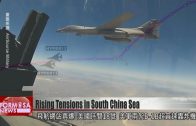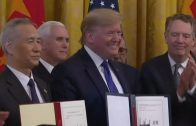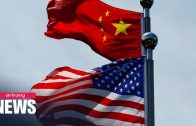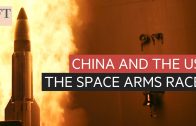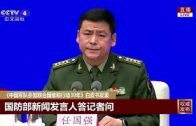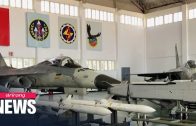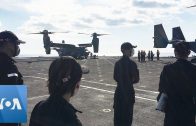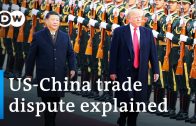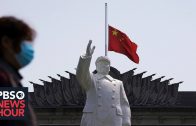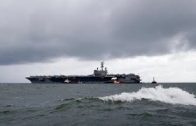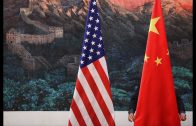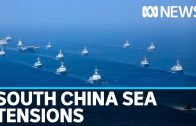U.S. and China increase military deployments in South China Sea, as tensions rise
With President Trump”s tough stance on the legality of China”s claims to the South China Sea, military tensions between the two superpowers are brewing. On Friday, satellite imagery revealed an unprecedented eight Chinese PLA air-to-air and air-to-ship fighter jets on one of the Paracel Islands. The U.S. military has also confirmed that two long-range supersonic B-1B Lancers took off from the U.S. mainland for repositioning in Guam. The U.S. claims to be protecting its allies in the region, but its message for China is clear.
Two days ago, two U.S. carrier groups performed an exercise in the South China Sea, while on Friday satellite imagery revealed a bird”s eye view of Chinese air force deployments on Woody Island.
On the island”s airstrip, eight Chinese jets could be seen lined up in a row. Foreign media have continually reposted the photographs, commenting that this was the first time for such a large contingent to be seen on the island.
Smith Chen
Defense analyst
It”s true that the configuration of this deployment is totally different from what we have seen in the past. Fighter jets are deployed to maintain air superiority. Attack aircraft or bombers are used for anti-ship attacks and bombing missions. The Chinese navy and air force must be considering whether permanently stationing these aircraft on the island are worth the logistics costs. If not, they will likely use troop rotations to establish its presence on the island installation
Experts still do not rule out that China may make these kinds of deployments part of its regular operations in the region. Its goal is nothing less than that of challenging the U.S. and gaining sovereignty over the sea.
Websites devoted to exposing flight movements were replete with images on July 18 of two B-1B Lancers, long-range multi-mission supersonic conventional bombers, taking off from a base in South Dakota, crossing the Pacific Ocean and landing in Guam for stationing, bringing the number of B-1Bs in Guam”s Anderson Air Force Base to four. The Indo-Pacific Command confirmed that this deployment was aimed at fulfilling U.S. defense commitments to its allies. These remarks were clearly aimed at China.
Smith Chen
Defense analyst
China often says that they have their so-called Xian H-6 Strategic Bomber that, when coupled with CJ-10 cruise missiles, can threaten Guam. If China uses its fighter jets in the South China Sea region for harassment or to fly more often to the region than before, the U.S. aircraft repositioning will make it able to reach the South China Sea more quickly. Whether it”s utilizing its so-called Aegis Combat System or having B-1Bs depart from Guam, they can all reach the South China Sea region rapidly and this kind of operational flexibility will actually increase pressure on China.
As China and the U.S. vie for influence in the South China Sea, Taiwan is paying attention from afar and is ready to respond to any possible development.
